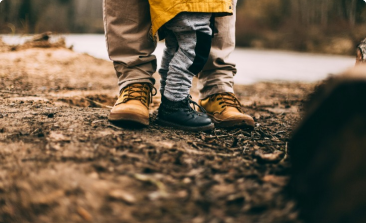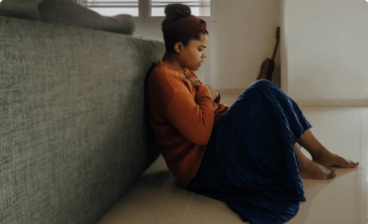10 movies based on ADHD
10 movies based on ADHD
The, Attention Deficit Hyperactivity Disorder(ADD or ADHD) comes with its own fair share of superpowers: creativity, hyper focus, and determination . It is One less-celebrated gift, though, is the ability to spot another person with ADHD in a hot second — especially if he or she is hyped up in lights.
Dory, Finding Nemo
Dory, from Pixar’s Finding Nemo,it is a kind-hearted regal blue tang who struggles with short-term memory which is a common problem among children and adults with ADHD. She can’t remember her work, names, places, or the fish she meets , and she was like that until she develops structure through a close relationship with the tightly wound clownfish Marlin. You , your child and family will laugh, cry, and everything in between as you follow Dory and Marlin on their adventure to save Nemo, and also on Dory’s advice to “Just keep swimming!” will help you when difficult ADHD symptoms get you down.
Percy Jackson, Percy Jackson & The Olympians
Percy Jackson doesn’t just had ADHD — he also struggling with dyslexia. That has made schooling tough, but in this Greek mythology-inspired series, these deficits become strengths of Percy’s and dyslexia helps him read Ancient Greek, for starters, and his ADHD allows him to adapt to unreasonable changes quickly and win battles against terrifying gods and some mythical creatures. The film’s director, Chris Columbus, says he was inspired to take on the project because of the Percy’s struggles in life . He hopes that when children with learning differences see the movie, “they may think to themselves, ‘I feel empowered. Maybe I can turn it around and start to feel more positive about things.’”
Daniel Hillard, Mrs. Doubtfire
In this Daniel — portrayed by the incomparable actor Robin Williams , who loves his children to the moon and back, but he is quite impulsive or unreliable to be a supportive father. After throwing a huge party for his son against his ex-wife’s wishes (something a person with ADHD may relate to), he’s forced to disguise himself as an elderly nanny to continue spending time with his kids — learning structure and bettering himself as a parent in the complete process. Your children will love and laugh at Williams’ comedic genius (who could forget the restaurant costume changes?), and take to heart the film’s message — that there is no one perfect kind of life for the family.
Mommy
The movie was Released in 2014
And was Rated: 8.1, it’s star Cast include Ariana, Delaney, Jasper Holt-Teza
Basically this story is about A single mom who is struggling with her teenager child who has ADHD and attachment disorder. She finds hope when a new neighbour that arrives in their lives with bundles of joy .
Thumb sucker
The movie was Released in 2005
And was Rated: 6.7
Its magnificent star Cast includes : Lou Taylor Pucci, Tilda Swinton, Vincent D’Onofrio
Its storyline covers A teenager who’s living in Oregon copes with his love life, and many other peoples like thumb-sucking problem, and his diagnosis with ADHD
Take Your Pills
The movie was Released: 2018 and was Rated as 6.4, Its Cast include Ariana, Delaney, Jasper Holt-Teza
The storyline of the film mainly revolves around ADHD medication abuse.
Free the Mind
Was Released in 2012 and Rated as 6.3
Casting include Richard Davidson, Emma Seppala, John Osborne
The story revolve around A brain specialist experiments with yoga and meditation as a means of helping people with ADHD and PSTD. .
Julie & Julia
The famous Amy Adams stars in this 2009 biographical film as Julie Powell, a young professional in New York City, who starts a blogging career in the hopes of cooking the 524 recipes from role model Julia Child’s cookbook in a complete year.
In this Julie, who has been diagnosed with ADHD, struggles to balance everything that’s going on in her life — from her mundane job that she struggles hard to get through to her hobby-turned-obsession blog. As someone with ADHD, who failed to cope up with her 9-to-5 office jobs , and who started a blogging while struggling through work, I identified with Julie Powell in a way I hadn’t ever experienced something like this before.
Juno
Juno tells the story of an, intelligent pregnant teenager. Role Played by Elliot Page, this film follows the various decisions Juno has to make throughout her pregnancy and adoption journey . Only a well-written ADHD character like Juno could make you laugh even when things are that serious, and cry when things are funny. She displays the impulsivity and emotional dysregulation that people with ADHD struggles with, alongside her individuality, vulnerability and creativity that make people with ADHD who they are in the best possible way.
Teen Wolf
Teen Wolf is a TV series that follows a high schooler who turned into a wolf, who protects his town from supernatural many disturbances. The main character’s best friend, Stiles, mentions throughout the series that he’s been diagnosed with ADHD and takes a regular medication for it.
Many of his struggles with inattentiveness and hyperactivity are typical symptoms of ADHD, but he also reveals that he struggles with anxiety and panic attacks were more prominent. Around 55% of adults with ADHD also struggle with anxiety; I appreciate the writers for including a lesser-known.















































